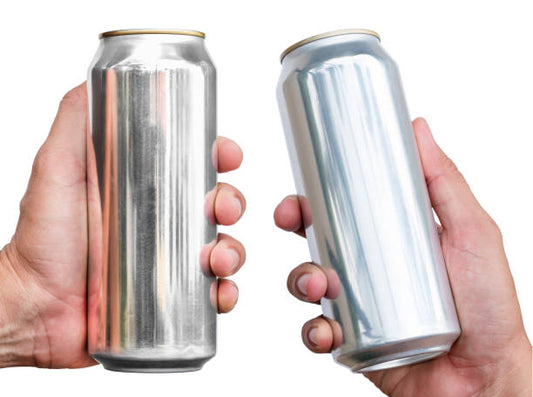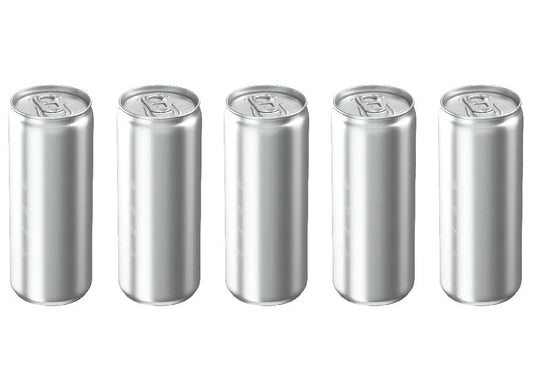While the digital landscape continues to evolve, the business card remains a vital tool in professional networking. More than just a provider of contact details, a meticulously crafted business card serves as a tangible extension of your brand identity. It conveys professionalism, fosters connections, and effectively communicates your message to potential partners. This comprehensive guide equips you how to design a business card that makes a lasting impression and strengthens your brand narrative.
What You Need to Prepare Before Design a Business Card?
Before diving into step by step to create a Professional business card, here are crucial steps to take to ensure your business card reflects your brand and effectively conveys your information:
1. Gather Your Content
- Personal information: This includes your full name, job title, and any relevant certifications or affiliations.
- Contact details: Make sure you have your phone number, email address, and website URL readily available.
- Social media: If you have active social media profiles relevant to your profession, include your usernames for those platforms as well.
2. Brand Identity Check
- Logo: Do you have a logo for yourself or your company? If so, make sure it's in a high-resolution format suitable for printing.
- Color scheme: Identify the colors that represent your brand or personal aesthetic. You'll use this to guide your design choices.
- Fonts: Do you have specific fonts associated with your brand? If not, consider choosing a couple of fonts that complement each other for your name, title, and contact details.
3. Define Your Goals
- Target audience: Who are you trying to reach with your business card? Understanding your audience will help tailor the design to resonate with them.
- Purpose: What is the primary function of your business card? Is it to simply provide contact information, or do you want it to showcase your work or a specific service?
- Desired impression: What kind of image do you want to project? Professional, creative, modern, or something else entirely?
4. Inspiration Gathering
- Research existing designs: Look at business cards of people in your field or companies you admire. See what design elements resonate with you and what you might want to adapt for your own card.
- Consider Online Resources: Websites like Canva: canva.com or Pinterest offer a wealth of business card design templates and inspiration boards.
5. Finalize Your Content & Consider Extras
- Prioritize information: Decide which information is most important to convey and prioritize its placement on the card.
- Double-check everything: Ensure all your contact details and any website URLs are accurate and typo-free.
- QR Code: Think about incorporating a QR code that links to your online portfolio, website, or social media profiles for a digital touchpoint.

Step by Step to Design a Business Card
Now that you have gathered all the necessary information and requirements, here are the steps on how to design a business card for your business.
1. Shape Up Your Design: Stand Out or Stay Classic
Deciding your card shape is essentiel. You can chooose:
- Classic Choice: The rectangular business card (3.5" x 2") is a timeless option. It offers a familiar format and ensures compatibility with most business card holders.
- Shape Exploration: Want to make a statement? Explore unique shapes like squares, rounded corners, or even die-cut designs that reflect your brand identity. Remember, prioritize readability – an oddly shaped card shouldn't hinder clear communication of your information.
2. Find the Right Size
The business card size matters! Here are the common sizes that you can consider:
- Standard Size: The 3.5" x 2" size is the industry standard for business cards. It offers ample space for essential information like your name, title, company details, and contact information.
- Thinking Bigger: If you have a lot to showcase, consider a slightly larger size (e.g., 3.5" x 2.5"). This extra space allows for more text, a QR code, or a small image without feeling cramped.
- Keep it Readable: While a larger size might seem tempting, avoid going overboard. A well-designed card shouldn't feel cluttered. Finding the right balance between information and white space is key.
3. Logo & Visual Appeal
Brand identity is important. That’s why you need to show it through logo and graphics.
- Prominent Logo Placement: Your logo is the visual identity of your brand, so ensure it's featured prominently on your business card. Use a high-resolution version of your logo for a clear and professional look.
- Complementary Graphics (Optional): Incorporate high-quality images or background graphics that complement your brand and resonate with your target audience. Think about imagery that reflects your industry or services offered.
- Color Scheme Consistency: Ensure the colors you use for your logo, graphics, and text are consistent with your established brand colors. This creates a cohesive visual identity.
4. Content
If you want your business card become a strong branding tool, make sure your business card concluding the important informations.
- Must-Haves: Include your name, title, company name, and contact information (phone number, email address, and website). Ensure all this information is accurate and easy to read.
- Social Media Integration (Optional): If you have a strong social media presence relevant to your field, consider including your handles for easy connection (e.g., LinkedIn, Twitter).
- Call to Action (Optional): A subtle call to action like "Visit our website" or "Contact us today" can nudge potential clients towards the next step.
- QR Code Integration (Optional): Consider incorporating a QR code that links to your online portfolio, website, or social media profiles for a tech-savvy touch.
5. Choosing the Right Font: Readability and Brand Harmony
When it comes to the font, here are things to notice:
- Readability First: Your fonts should be clear, easy-to-read, and professional-looking. Avoid overly decorative or script fonts that might be difficult to decipher, especially at a glance.
- Brand Consistency: Choose fonts that complement your brand and logo. Consider using the same font families you use on your website or marketing materials for a cohesive brand image.
- Two is Plenty: Limit yourself to a maximum of two fonts for your business card. One font for your name and title, and another for your contact details, creates a clean and organized look.
6. Finding the Perfect Fit for Your Needs
Depending to your needs, you can choose to design your business card by yourself or hiring a professional designer.
- Do-It-Yourself (DIY): If you're comfortable with design software or online tools, you can create your own business card using platforms like Canva or Adobe Photoshop. There are many free and paid templates available to get you started.
- Professional Touch: Consider hiring a professional graphic designer if you need a more complex or unique card design. A designer can bring your vision to life and ensure a polished final product, especially if your brand requires a specific aesthetic.
7. Final Touches & Approval
Below are the important things before printing:
- Proofread me: Once your design is complete, meticulously proofread all information for accuracy. Typos or errors can create a negative first impression.
- Feedback loop: Get feedback from colleagues, friends, or potential clients on your design. Their insights can help you identify areas for improvement before finalizing the design.
- Finalize & print: When you're confident your business card design perfectly reflects your brand identity and conveys your information clearly, finalize the design and send it to a reputable printer for high-quality results.
Conclusion
In conclusion, your business card is a miniature billboard for your brand. By following this guide, you can create a card that sparks connections and leaves a lasting impression. Remember, clarity and professionalism are key. Design a business card that speaks volumes about you and your brand.









